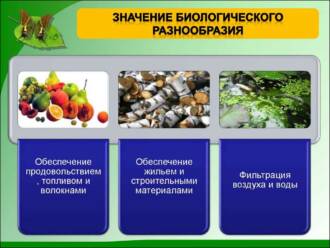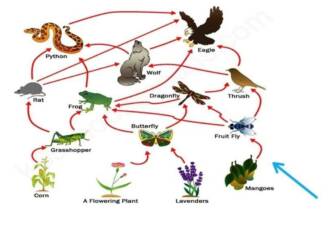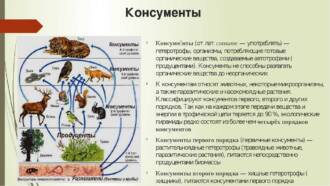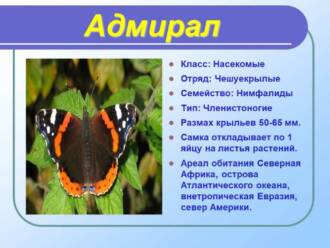
Butterflies are one of the most beautiful and amazing groups of insects that live on our planet. They attract attention with their bright wings and graceful flight. But their beauty is not the only reason why they are so important to humans.
One of the key roles of butterflies in the ecosystem is their participation in the pollination of plants. Butterflies are efficient pollinators, carrying pollen from one flower to another. This helps plants reproduce and ensures the diversity and richness of the plant world. Without the participation of butterflies, many plant species would not be able to spread and survive.
In addition, butterflies are an important link in the food chain. They serve as food for many species of birds, insectivorous mammals and other predators. Without butterflies, these animals would be deprived of one of their main food sources and would not be able to sustain their population in the long term.
Butterflies also have cultural and symbolic significance for various peoples and cultures. In different traditions, they are associated with beauty, change, lightness and spirituality. They are mentioned in literature, art and mythology, being a source of inspiration and a symbol of transformation.
In general, butterflies play an important role in the biological and ecological balance of our planet. They are an integral part of nature and habitat, and their conservation and protection are important tasks for humanity. We must value and protect these amazing creatures in order to preserve the richness and diversity of our living planet.
The value of butterflies for humans and the environment
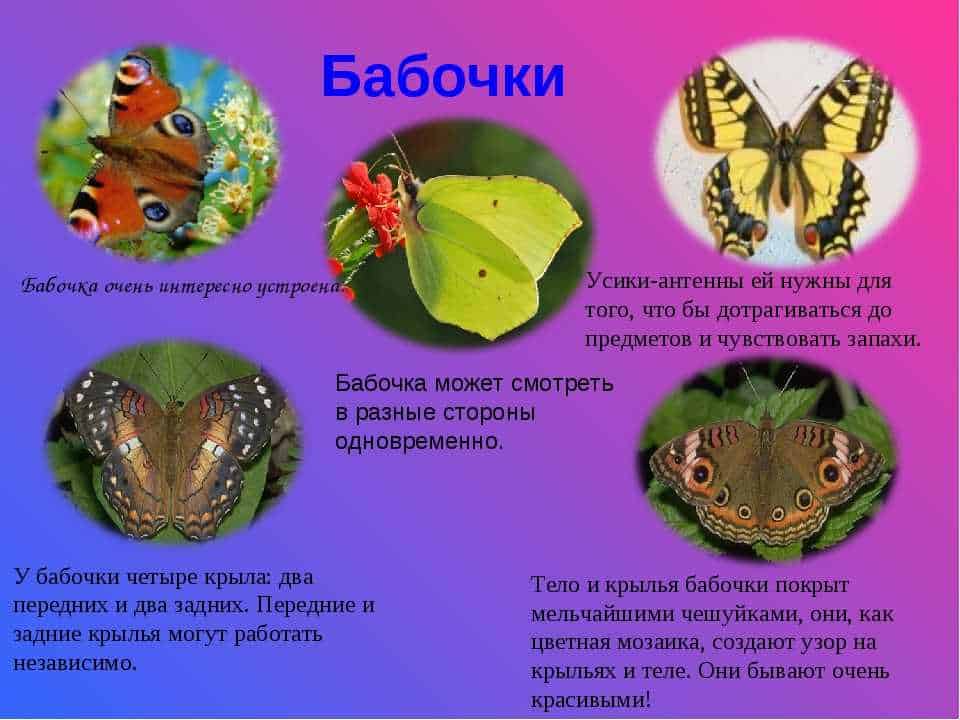
Butterflies are important creatures in the nature around us and are of significant importance to humans. They perform a number of functions that contribute to biodiversity and the ecosystem as a whole.
First, butterflies are pollinators of many plants. They carry pollen from one flower to another, ensuring the process of pollination and the subsequent fruitfulness of plants. Without the participation of butterflies, many plants would not be able to reproduce and survive.
Secondly, butterflies are the food chain for many other animals. Adult butterflies serve as a food source for birds, bats, and other insectivorous animals. Butterfly caterpillars, in turn, are food for many parasitic insects and birds.
Also, butterflies are indicators of ecological balance. Their presence or absence may indicate the quality of the environment and its condition. A decrease in the number of butterflies may indicate a violation of the ecosystem and an imbalance in nature.
Do not forget about the aesthetic value of butterflies. They are beautiful and amazing creatures that bring brightness and beauty to nature. Butterflies have become an object of research and inspiration for many artists and poets.
In general, butterflies play an important role in the environment and for humans. They are an integral part of nature and its biological diversity. Conservation and protection of butterflies and their habitats are important tasks for the conservation of ecosystems and natural beauty.
Dust vectors and pollinators
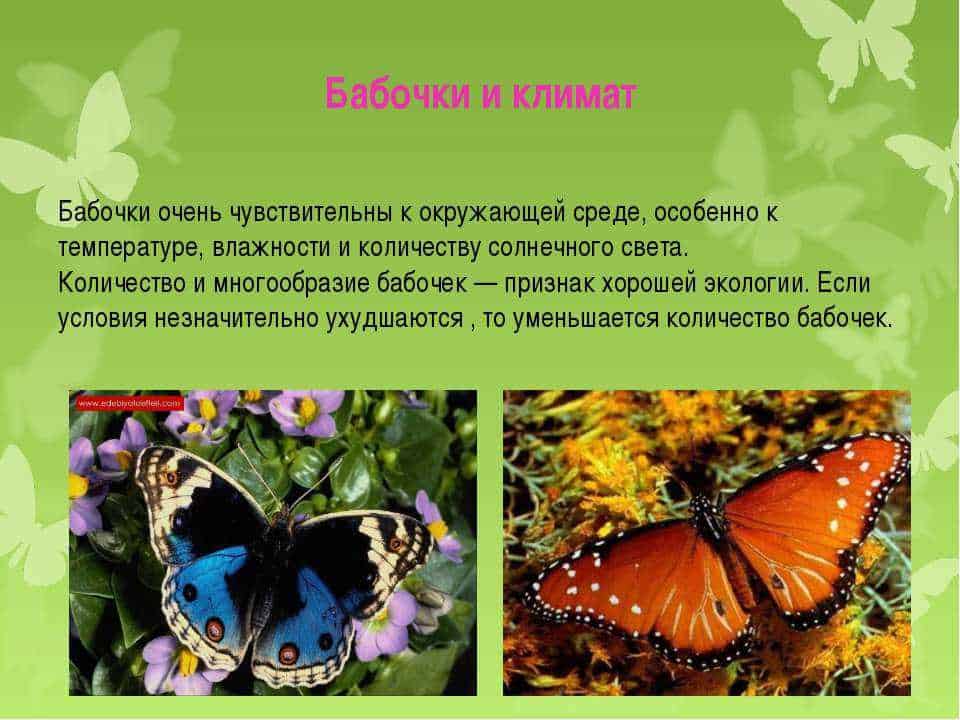
Butterflies are important dust vectors and pollinators. During their flight, they imperceptibly carry pollen on their paws and body, which sticks to their body. When butterflies visit flowers to feed on nectar, the pollen from their bodies is transferred to the flower, which aids in pollination.
Pollination plays an important role in the life cycle of plants. Butterflies, visiting different flowers, transfer pollen from stamens to pistils, which allows plants to be fertilized and produce seeds or fruits. Thus, butterflies are an integral part of the pollination process, which ensures the diversity and conservation of the plant world.
Some butterfly species are more efficient pollinators than others. For example, moths such as cutworms have long proboscises that allow them to reach deep-seated nectar in flowers with hard-to-reach stamens. There are also butterflies that specialize in pollinating certain plant species, making them important for ecosystem and biodiversity conservation.
Ecological environment quality indicators
Butterflies are excellent indicators of the quality of the ecological environment. Their presence and diversity is an indicator of the health and balance of an ecosystem. A large number of butterflies indicates the presence of a variety of plants and flowers, as well as the presence of a sufficient amount of food resources.
However, the deterioration of the quality of the ecological environment can lead to a reduction in the number and diversity of butterflies. Climate change, air pollution and the use of pesticides are having a negative impact on butterfly populations. This can lead to disruption of the ecosystem and deterioration of the living conditions of other plant and animal species.
Butterfly diversity can also serve as an indicator of the quality of aquatic ecosystems. Some species of butterflies may use water resources as a breeding ground. If the aquatic ecosystem is disturbed or polluted, this can lead to a reduction in the abundance and diversity of these butterfly species. Thus, the study of butterflies can help in determining the condition and quality of aquatic ecosystems.
Butterfly research can also be useful in assessing the impact of human activities on nature. Changes in the number and diversity of butterflies may be associated with deforestation, development of territories or the use of agricultural land. Studying butterfly populations and how they respond to such changes can help understand the impact of human activity and develop measures to conserve and restore ecosystems.
Thus, butterflies play an important role in assessing the quality of the ecological environment. The study of their abundance and diversity can help determine the state of ecosystems and assess the impact of human activities on nature. The conservation and protection of butterflies is an important task to maintain the balance and health of ecosystems.
Food source for other animals
Butterflies are an important food source for many animals, including birds, frogs, lizards, and insectivorous mammals. They are a rich source of protein and energy needed to keep these animals alive.
Many species of birds, such as nightjars, bite butterflies in flight using their sharp beaks and quick reactions. They catch butterflies in the air and eat them whole or tear them apart.
Frogs and lizards also feed on butterflies. They use their tongues to catch a butterfly and then swallow it whole. Butterflies are an important source of nutrients and energy for these cold-blooded animals.
Some insectivorous mammals, such as the bat, also feed on butterflies. They catch them in the air using echolocation and then eat them to get the food and energy they need.
Thus, butterflies play an important role in the food chain and are a source of food for other animals. Their presence and diversity in the environment are of significant importance for biological balance and biodiversity.
Role in biodiversity

Butterflies play an important role in maintaining and increasing biodiversity. They are one of the most common and numerous groups of insects found on all continents except Antarctica. Due to their diversity and different food habits, butterflies contribute to the conservation and diversity of plant species.
Pollination: Butterflies are important pollinators for many plants. When visiting flowers in search of nectar, they carry pollen on their body and transfer it from one flower to another. In this way, butterflies contribute to the pollination and reproduction of plants, which is a key factor in maintaining biodiversity.
Plant distribution: Some butterfly species are specialized partners for certain types of plants. They play an important role in seed dispersal and promote the colonization of new territories by plants. Butterflies can carry seeds over considerable distances, which helps plants expand their range and increase biodiversity in various ecosystems.
Food for other animals: Butterflies are an important food source for many other animals, including birds, frogs, and insectivorous mammals. They form a significant part of the food chain and serve as a source of energy for many animals, which in turn affect the biodiversity and ecological sustainability of the ecosystem.
Ecosystem state indicators: Butterflies are sensitive to changes in ecosystems and can serve as important indicators of their condition. The study and monitoring of butterfly populations makes it possible to assess the effects of anthropogenic impact on ecosystems, as well as to take measures for their conservation and restoration.
Thus, butterflies play an indispensable role in the maintenance of biodiversity, plant pollination and the functioning of ecosystems. The processes associated with butterflies are of global importance for life on Earth and require the protection and preservation of their many-sided world.
Source of scientific research

Scientific research plays an important role in the study of butterflies and their significance to humans. They allow scientists to gain a deeper understanding about the biology and behavior of butterflies, their interaction with the environment and their role in the ecosystem.
The research also helps identify the threats faced by butterflies and develop conservation measures. Scientists are studying factors affecting butterfly populations, changes in their migration routes, and the effects of climate change on their life cycle.
Scientific research also allows scientists to study the genetic structure and diversity of butterflies. Thanks to this, it becomes possible for scientists to identify and classify different types of butterflies, as well as to study their evolutionary origin and family ties.
The source of scientific research on butterflies are various scientific journals, publications and specialized databases. Scientists use methods of observation, sampling, experimentation and data analysis to gain reliable information about butterflies and their significance to humans.
Importance for breeding and horticulture
Butterflies are important subjects in breeding and horticulture. They play the role of pollinators of many plants, which ensures their reproduction and biodiversity conservation. Through pollination, butterflies help gardeners get better and more abundant crops.
One way to attract butterflies to gardens and vegetable plots is to create special conditions for their reproduction and habitat. Some species of butterflies have their own special host plants on which they lay their eggs. Therefore, gardeners can plant such plants to attract the desired species of butterflies and provide conditions for their reproduction.
In addition, butterflies can serve as indicators of the ecological state of the environment. Changes in the number and species composition of butterflies may indicate pollution or destruction of the natural environment. Therefore, the study and monitoring of butterflies play an important role in assessing the ecological state and developing measures to improve it.
Thus, butterflies are of great importance for breeding and horticulture. They are pollinators of plants, help to increase the yield and quality of crops. In addition, butterflies can serve as indicators of the state of the environment, which makes them important objects of research and monitoring of the ecological situation.
Cultural significance and symbolism
Butterflies are of great cultural importance in different cultures and symbolize different things. In many cultures, the butterfly is associated with transformation and rebirth. Its life cycle, starting with a caterpillar, turning into a chrysalis and then emerging from it as an adult butterfly, symbolizes overcoming difficulties and transition to a new phase of life.
In Chinese culture butterflies are often associated with love and happiness. They are considered symbols of harmony and prosperity. In Chinese art and literature, butterflies are often depicted in pairs, symbolizing happy relationships and lasting love.
In Japanese culture butterflies are also a symbol of love and happiness. They are associated with transformation and beauty. In Japanese art, butterflies are often depicted on kimonos, paintings, and jewelry.
In European culture butterflies are associated with lightness and elegance. They are often depicted in paintings and jewelry, symbolizing beauty and nature.
Butterflies also have symbolic meaning in religious beliefs. In Christianity, the butterfly symbolizes spiritual rebirth and resurrection. In some cultures, the butterfly is also associated with the souls of the dead and is considered to be the carrier of their spirit to heaven.
Thus, butterflies have a deep cultural meaning and symbolize various aspects of life, from love and happiness to transformation and spiritual rebirth.
Economic importance
Butterflies are of significant economic importance to humans. They play an important role in eating horticultural and agricultural crops, their larvae can damage crops. Some species of butterflies, such as caterpillars of moths and fruit borers, feed on fruits and vegetables, causing significant losses in agriculture.
However, some butterflies also have a positive economic value. For example, pollinating butterflies play an important role in the pollination of many plants, especially wild and garden flowers. They carry pollen from one flower to another, which contributes to the formation of seeds and fruits. Without these butterflies, many plants would not be able to reproduce and continue to exist.
In addition, butterflies are of great importance in the tourism industry. Many people study and observe butterflies in their natural habitat with interest. Some countries and regions offer excursions and tours to butterfly gardens and reserves, where you can meet a variety of butterfly species. This creates jobs and generates income for the regions, contributing to the development of local tourism.
Thus, butterflies are of significant economic importance to humans. They can damage crops, but also play an important role in plant pollination and promote the tourism industry. Therefore, the protection and conservation of butterflies are important tasks that will help maintain economic stability and biological diversity.
Participation in ecotourism and development of the tourism industry
Butterflies play an important role in the development of ecotourism and the tourism industry. Their colorful wings and graceful flights attract the attention of many people, and many tourists are willing to travel to see the variety of butterflies in their natural habitat.
Butterfly-watching ecotourism is becoming an increasingly popular form of recreation. Many countries and regions are developing special reserves and parks where butterflies are free to breed and inhabit their environment. Tourists can take part in excursions and guided hikes to learn more about the biology and behavior of butterflies, as well as enjoy their beauty and uniqueness.
The development of ecotourism associated with butterflies is not only of economic importance, but also important in terms of nature conservation. Many butterflies are endangered due to the loss of their natural habitats and pollution. The creation of special reserves and parks dedicated to butterflies helps to preserve their populations and contributes to the conservation of biodiversity.
The tourism industry is also benefiting from the development of butterfly-related ecotourism. The development and promotion of butterfly-watching tourist routes attracts new visitors and boosts the local economy. Tourists who come to the region to watch butterflies can also visit local hotels, restaurants and shops, which creates new jobs and contributes to the economic development of the region.
Thus, participation in butterfly ecotourism not only allows people to enjoy the beauty of these creatures, but also contributes to the development of the economy and the conservation of nature. This is an important step towards sustainable development and conservation of our planet's biodiversity.
Read more:


